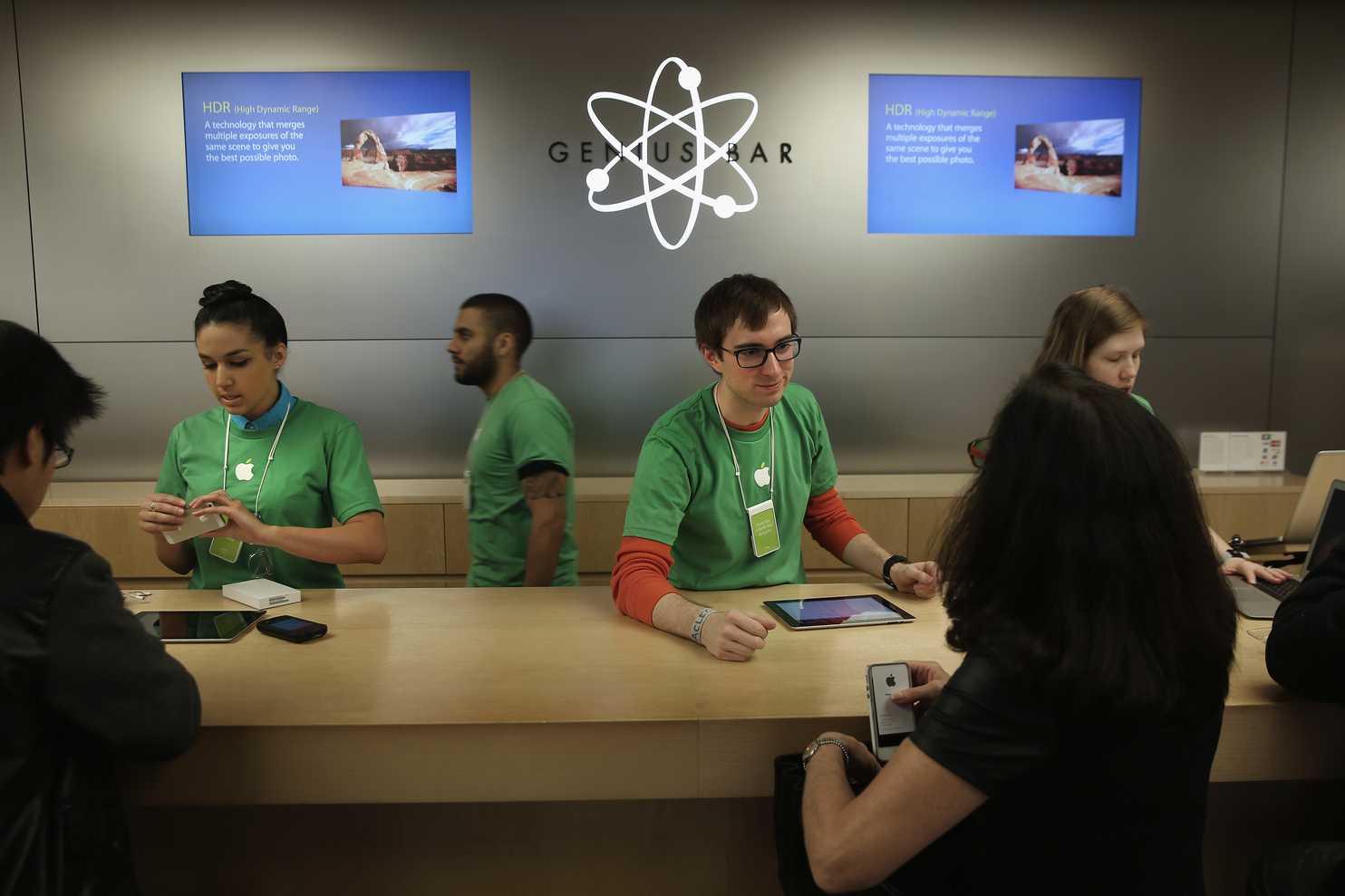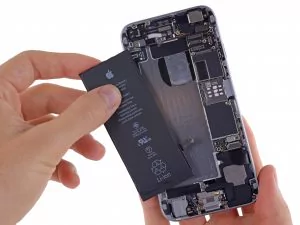Apple is slashing prices for battery replacements after saying it slowed down older iPhones to avoid unexpected shutdowns related to battery fatigue. (Reuters)
Rarely is tech advice this cut and dried: If you bought an iPhone in 2016 or earlier, make an appointment at a Genius Bar as soon as possible. Apple just started a program that can make old iPhones feel new again — for just $29.
An Apple store or repair shop will pop the hood of your iPhone 6, 6s, SE or 7 and swap out the battery. Like a jalopy after a Jiffy Lube, a three-year-old iPhone with a fresh battery will not only run longer, chances are it will also run faster.
Just hurry up and do it. When I showed up with an appointment at my closest Apple store on Jan. 3, there were so many others also trying to replace their batteries that I had to join a weeks-long waiting list. Your local shop might have more supply, but battling hordes for repair (rather than a sexy new phone) is an unusual experience at an Apple store.
What’s the big deal? Apple shaved $50 off its standard battery fee in an extraordinary — but limited-time — effort to get back in our good graces. It got caught in December slowing iPhones with worn-out batteries — a move, it says, that keeps the phones from unexpectedly shutting down. If you always suspected your old iPhone was getting slower, you were right.
But now there’s a fix. While most of us were in a holidaze last week, Apple published a mea culpa and promised to make replacing the battery on an iPhone less expensive through the end of 2018. It made the move, it said, “to address our customers’ concerns, to recognize their loyalty and to regain the trust of anyone who may have doubted Apple’s intentions.” On Dec. 30, Apple said it would begin honoring a $29 price immediately.
[Could Apple’s battery program encourage people to upgrade less often?]
This is going to cost Apple a lot more than just overtime at the Genius Bar. Once your phone get a fresh battery and the processor kicks back to 100 percent, there’s a chance you might not feel the need to upgrade your iPhone for a while. One analyst, Mark Moskowitz of Barclays, expects the battery offer could cause Apple to sell 16 million fewer new iPhones. (And you definitely shouldn’t buy a phone you don’t need; here’s my advice on whether you should upgrade to this year’s iPhone 8 and X.)
Still, inexpensive battery replacement is the right thing for Apple to do. A good reputation is its best selling point in an era where smartphone features are reaching parity. Battery life is most people’s No. 1 complaint about their phones, and maintenance is a long-overdue part to smartphone ownership. When Apple makes repairing phones as easy as buying new ones, it saves us money and it’s better for the environment.
How to replace an iPhone battery
How do you know if you’d benefit from a new battery? Apple has promised a software update soon that gives us more visibility into battery health. For now, though, if your phone is really bad off there might be a warning message when you dig into the settings menu. Or here’s a yardstick: If your iPhone can’t last from morning coffee to happy hour on a single charge, it’s time.
Anyone with an iPhone 6 or newer is eligible for the $29 replacement, regardless of what Apple’s battery tests report. (If you paid for AppleCare+ coverage, it might even be free.) Remember, this isn’t just about improving battery life; some tests have found replacing the battery can result in speed improvements of over 100 percent.
To get a new battery, log on to Apple’s support site, and then select iPhone, then Battery, then Battery replacement. If you live near an Apple store or authorized repair shop such as Best Buy, select one and make an appointment. (Call ahead to third-party shops to make sure they’ll honor the $29 offer.)
Then be prepared to wait. Most of my local stores are booked for days. And just because you have an appointment doesn’t mean you’ll get your replacement right away. I went in to Apple’s San Francisco flagship five days after its announcement and my store Genius reported he was already out of stock of iPhone 6 batteries — and there were thousands of other customers ahead of me to get one. They’ll email me when there’s a battery in stock, at which point I have to go back to the store.
Apple could improve this process. As my Genius explained it, you can’t get in the queue for a replacement battery until a Genius has signed off on your order — so there’s no way to avoid two trips. And there’s also no way to easily check stock supplies; when I tried calling another store, I couldn’t get a straight answer. If Apple can’t meet customer demand for replacements, it ought to at least help set our expectations.
There are a few other options. If you live far away from a store and have a backup phone handy, you could mail your iPhone to Apple to replace the battery, via the same Apple support site. (There’s also a $7 shipping fee.)
You could take the unofficial route. A service called iCracked will send a repair person to you to replace a battery for between $20 and $50. Some mom-and-pop repair shops will replace an iPhone battery for less than $30.
Or there is the hands-on approach: Buy a battery replacement kit, like the $25 one sold by iFixit. This isn’t for the clumsy or fainthearted, but there’s a special satisfaction to opening up a gadget and seeing what makes it tick … and then ripping it out and replacing it with something better.
Read more from Geoffrey A. Fowler:
10 ways tech will shape your life in 2018, for better and worse


